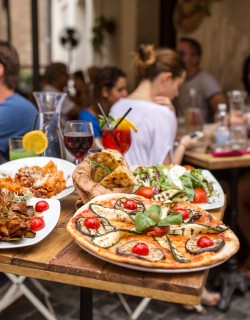As much as it is one the world’s pre-eminent cities of art and culture, Rome is also a city of food. From pecorino Romano to artichokes deep-fried or braised in oil, from street-food staples like pizza and supplì to rustic classics like tripe and rabbit stew, it is a rare visitor who leaves the Eternal city with a dissatisfied belly. But whilst Roman chefs are a dab hand at pretty much any kind of food you care to mention, this greedy city has a particularly powerful love affair with pasta. Whether long or short, fresh or dried, slathered in tomato-based sauces or cheesy emulsions, there’s something for everyone in the Roman pantheon of pasta. Discover the most important pasta dishes in the canon of Roman cuisine with our countdown!
Carbonara
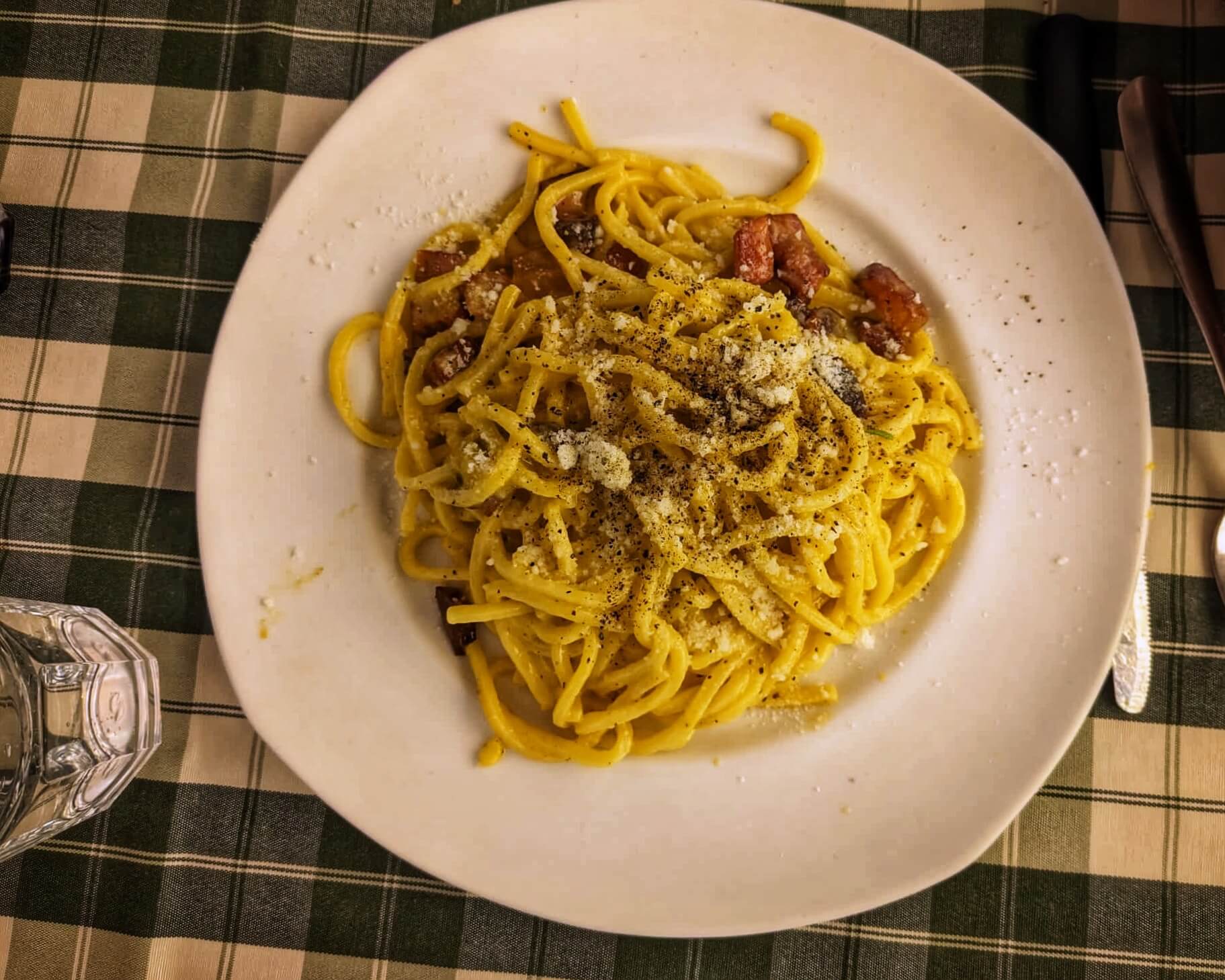
Ask a cross-section of Romans what they would want on the table for their last meal, and you’ll be astonished at just how many will be calling for carbonara. Indeed, this venerable pasta dish inspires love, devotion and yes, even obsession, amongst denizens of the Eternal City like nothing else.
But let’s get down to brass tacks: there’s only one way to make carbonara, and it’s disarmingly simple. Gently fry lardons of guanciale (a kind of bacon made from cured pork jowl known for its delectable ribbons of fat) until it renders; in a separate bowl, beat together egg yolks (with just a little egg white to loosen) and heaps of pecorino cheese (some cut the pecorino with parmesan to soften the sharp tang of the sheep’s cheese), together with liberal grindings of black pepper.
Combine the lot with freshly cooked pasta (the classic shapes are spaghetti and tonnarelli, or rigatoni and mezze maniche if you prefer a short pasta), drained and taken off the heat. Do it correctly and everything emulsifies into a heavenly creamy sauce that coats the pasta in silken perfection - add a small amount of the starchy pasta water to aid the emulsification.
Simple, yes, but also simple to get wrong. If the pasta is too hot, the eggs will scramble; mistime things and the guanciale will either lose its crunch or taste like cardboard; err in the egg/cheese ratio and the sauce will be too soupy or too claggy. And it goes without saying that if you add cream to the sauce, or make any other unsanctioned changes to the recipe, the ancient Roman gods will strike you down in your kitchen.
For a dish that inspires such powerful emotions, the origins of carbonara are surprisingly recent. Whilst some claim that carbonara was traditionally whipped up by carbonari (charcoal burners), on their journeys deep into the forests east of Rome, references to the recipe only first appear in the 1940s, giving rise to the theory that the dish owes its existence to the contents of the ration packs carried by American soldiers stationed in Rome during World War II.
Looking to switch up their usual diet, the GIs added powdered egg, bacon and cheese to plain pasta in the army canteens. The novelty caught on, local cooks refined the rustic ingredients and the method, and the rest is history. But whilst we might never know who to thank for coming up with the recipe, one thing is certain: no trip to Rome is complete without a steaming plate of carbonara!
Amatriciana
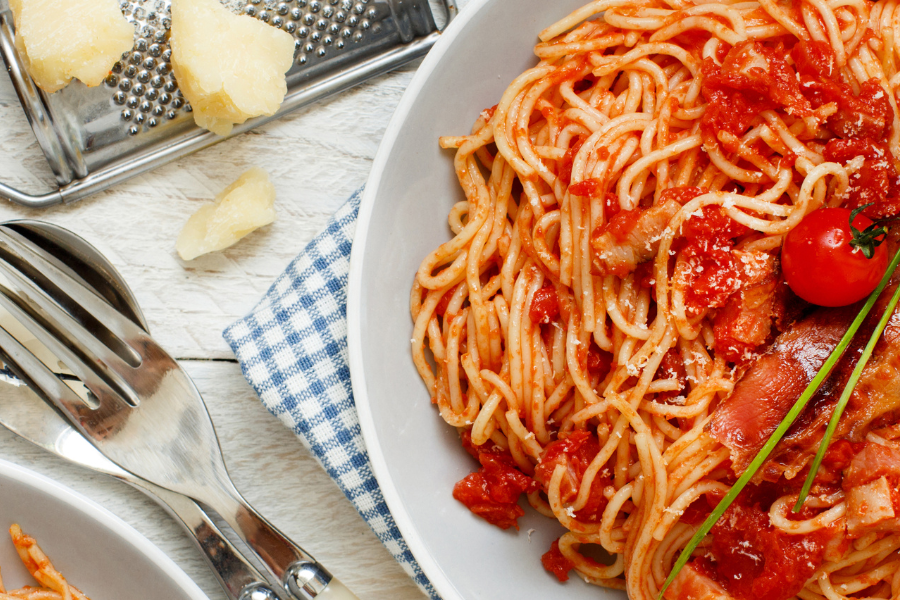
Here’s one for the red sauce lovers. A richly satisfying combination of whole tinned tomatoes, fatty and salty-sweet guanciale, a splash or two of aromatising white wine, a dusting of red chilli, black pepper and a generous handful of grated pecorino, amatriciana originally comes from the small town of Amatrice in the hills of central Lazio.
Debate rages as to the correct recipe; so much so that the local council in Amatrice, furious at what they see as adulterations to their local heritage, have released an officially sanctioned and certified version with the above ingredients. A key bone of contention is the use of onions at the beginning of the recipe. It’s a variation that’s common in Rome, but stoutly rejected by traditionalists from Amatrice, even if the first officially recorded version of the recipe, found in an 1816 cooking manual by Roman chef Francesco Leonardi (who served the dish to Pope Pius VII himself), includes them.
The origins of the dish are far older than the written records might tell us, however, and it was almost certainly first devised by shepherds on their wanderings through the mountains of Lazio during the summer months with their flocks. The shepherds had no shortage of pecorino made from the milk of their sheep, and cured guanciale was a good traveller too. A few dried red chillies, some lard and a flagon of rustic white wine also accompanied the herdsmen on their journey, and each played their part in the evolution of this true Roman classic. The tomatoes, of course, only came later, but are a more than welcome addition.
If you want to be authentic about things then amatriciana needs to be served with bucatini – literally meaning ‘pierced,’ this long fat pasta has a hole running down the middle that collects the sauce.
Gricia
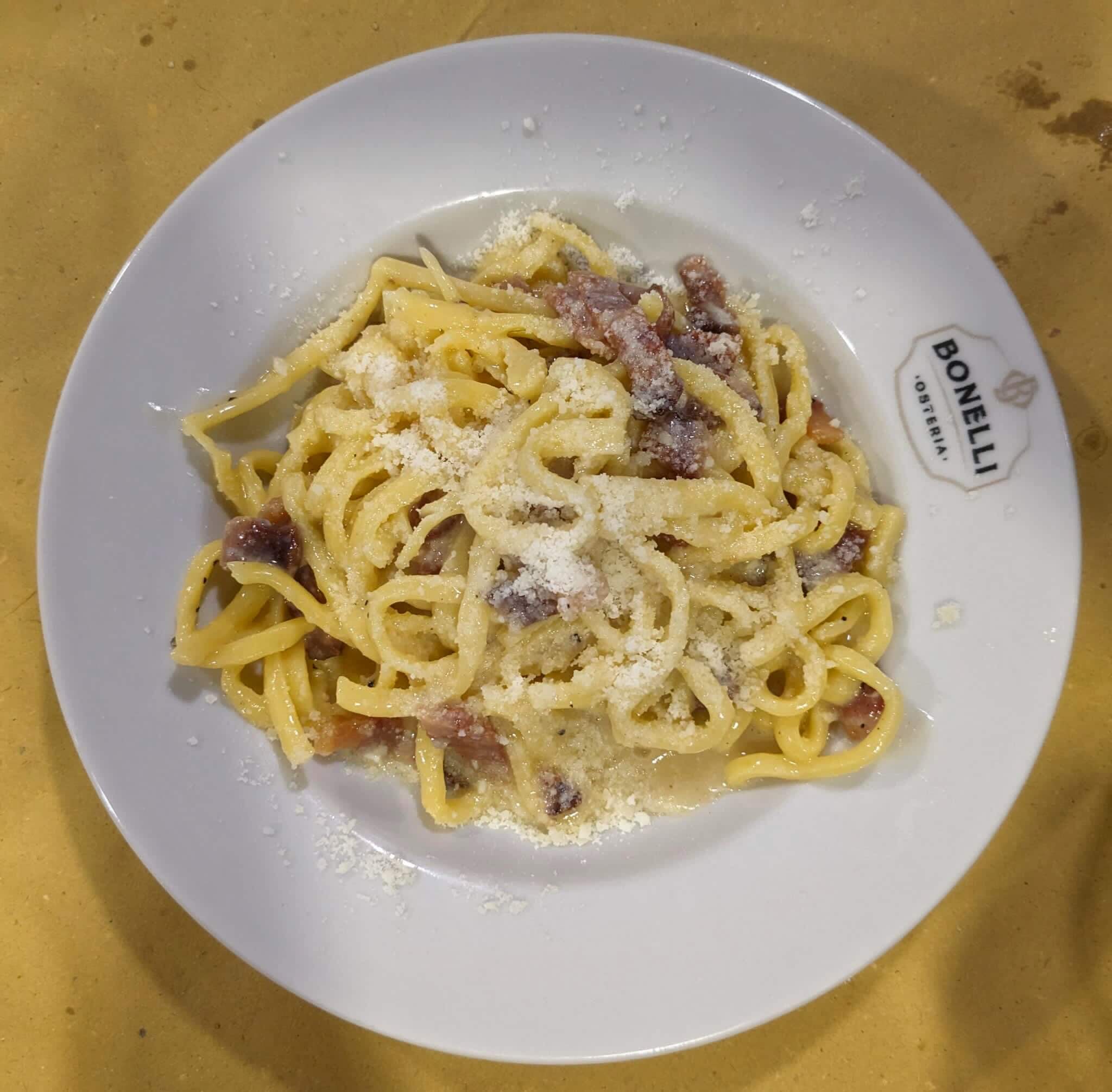
Before amatriciana, there was gricia. Despite being a fundamental ingredient of Italian cooking today, the tomato is only a relatively recent arrival on Mediterranean shores. The plant was introduced into Europe by the Spanish in the wake of the invasion and colonisation of the Americas, but initially was primarily conceived of as ornamental; as a member of the usually poisonous nightshade family, its use as a foodstuff was viewed with suspicion.
The first recorded recipes in Italy using tomatoes date from a 1692 Spanish-inspired Neapolitan cookbook, and tomatoes were only widely adopted in the country’s cuisine a century or so later. All that is to say that before then, cooks had to rely on other sources of flavour to add piquancy to their sauces. Using the same ingredients as amatriciana minus the tomatoes, gricia sauce is the direct ancestor of the more famous sugo rosso, and offers a fascinating taste of the past.
Cacio e Pepe
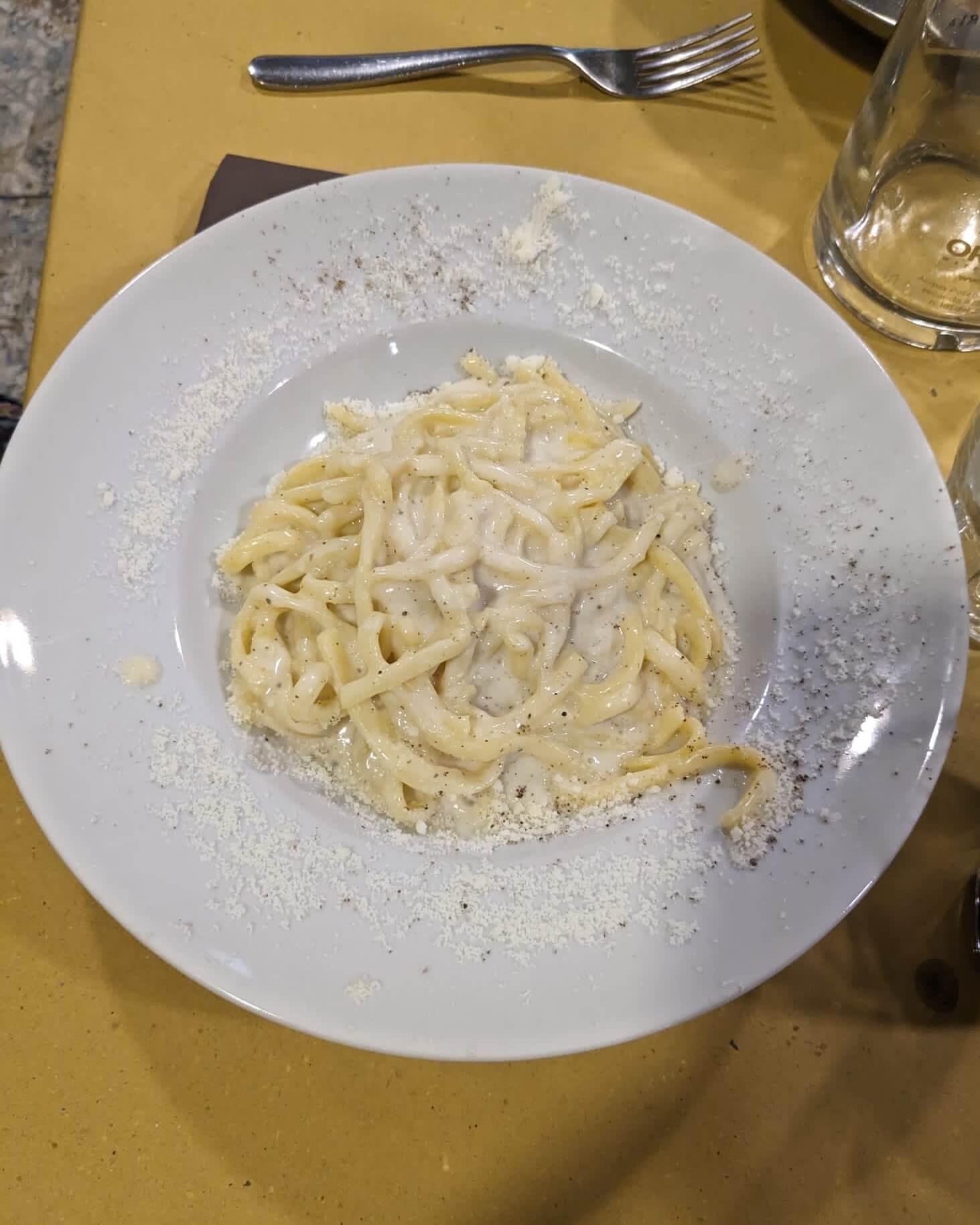
Who could imagine that a pasta sauce with just two, count them, two, ingredients could be as delicious and complex tasting as cacio e pepe, one of Rome’s most venerable and beloved dishes? The key to this classic recipe is finding an extra sharp pecorino romano, the local sheep’s cheese that plays such a key role in the cuisine of the Eternal City. Oh, and to not be stingy on the amounts: if you ever see this dish being made in a traditional Roman trattoria, or better again in nonna’s kitchen, you’ll likely be astounded at the amount of cheese being deployed in this warhorse of cucina povera.
The other star of the recipe is black pepper, and lots of it. Once again, cacio e pepe is a dish born from necessity. In the past shepherds carried these non-perishable ingredients with them on their treks into the mountainous Lazio wilderness with their flocks. Sheep’s cheese was one foodstuff that was never in short supply for the herdsman, and pasta and pepper were easily transportable. It must have been the work of a moment to boil up some pasta in the embers of a campfire, mix in the cheese and pepper - and tuck in to some much needed calories.
Like the other entries on our list of Rome’s most famous pastas, the apparent simplicity of cacio e pepe can be misleading, however. It’s a surprisingly difficult dish to get right, and the difference between an average version and the top-tier stuff is really noticeable, so don’t think twice about ordering it even in fancier establishments - a good cacio e pepe is worth its weight in gold! Oh, and here too the choice of pasta shape is pretty much non-negotiable - it has to be fresh egg-based tonnarelli, a thick, squared-off cousin of spaghetti traditional to Lazio.
Pajata
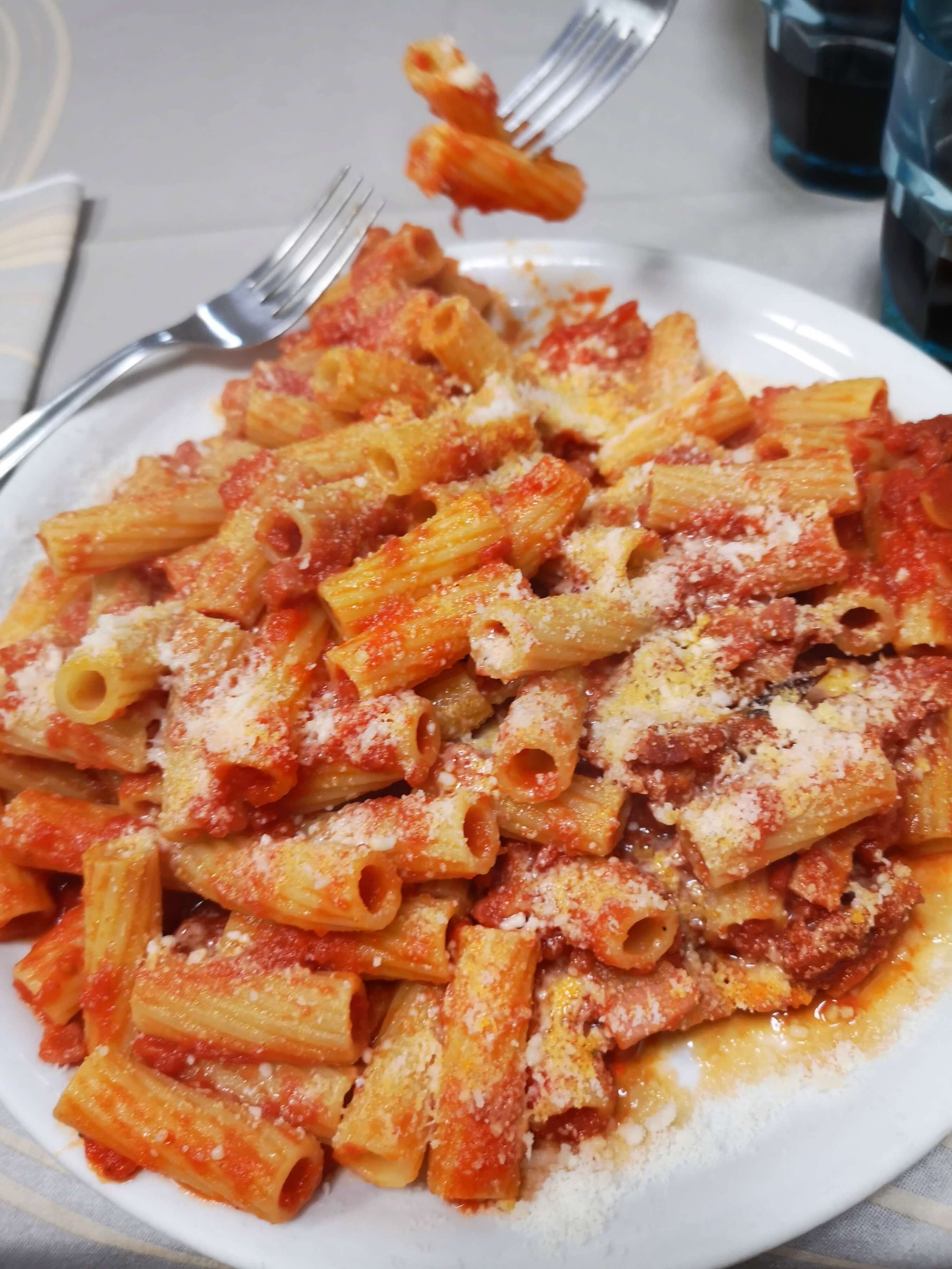
Like many of the world’s great metropolises, Rome’s traditional cuisine is centred on cucina povera, or poor cooking. With a massive urban poor to feed, enterprising tavern chefs and home cooks alike have come up with delicious recipes over the centuries that rely on cheap, readily available ingredients. One of the most important, and delicious aspects of this culinary tradition entails the widespread use of offal, known in the city somewhat ironically as the quinto quarto.
Quinto quarto literally means the fifth quarter, and refers to the unwanted leftovers of animals butchered in the city’s massive slaughterhouse in the 18th and 19th centuries that remained unclaimed after the choicest cuts had been portioned off to the city’s upper and middle classes. These butchery scraps were then sold on the cheap to the cash-strapped masses or delivered to the abattoir workers as payment in kind. A rich food tradition was created from these poor ingredients, and one of the classic quinto quarto dishes that you need to try when in Rome is pajata.
Be warned that pajata can be a somewhat challenging sell for the less adventurous eaters out there: the sauce is made using the intestine of an unweaned calf (as veal, the meat would of course have been destined for the tables of the city’s wealthiest patrons), which takes on a distinctive taste and tenderness from the remaining presence of the mother’s milk. Don’t say we didn’t warn you! But this is Roman cuisine at its most authentic, and when ooked in a tangy tomato sauce served over rigatoni pasta with generous sprinklings of pecorino, it’s absolutely delicious.
Fettuccine Alfredo

You might be surprised to see this classic of Italian-American cooking on our list, and indeed many Italians might howl in anger to see this apparent interloper from across the waves nestled amongst such icons of la cucina italiana. But things aren’t what they seem. Despite being a staple of everywhere from Olive Garden to the finest New York Italian-American eateries, fettuccine Alfredo was actually invented by a Roman chef called, you guessed it, Alfredo di Lelio, in his eponymous Roman-as-it-gets restaurant way back in 1914. And yes, that makes it a longer standing member of the Roman pasta scene than carbonara!
However, there are some caveats. The thick, cream-heavy sauce known as Alfredo in the States is very different from Alfredo’s original concoction, which owes its luscious texture to butter (lots of butter), cheese and cooking water coming together in all their emulsified glory.
According to legend, Alfredo came up with the idea for his sauce when looking for nourishing grub to serve his wife shortly after she gave birth to their son, and after adding the dish to his restaurant’s menu it soon became a palpable hit. When legends of the Golden Age of Hollywood Douglas Fairbanks and Mary Pickford sampled it on their honeymoon in Rome in 1914, they enjoyed it so much that they gifted Alfredo a golden fork and spoon inscribed with the words “To Alfredo the King of the noodles.”
Despite the sauce’s popularity in the states, however, you won’t find it in too many restaurants in the Eternal City. The restaurant that Alfredo began over a hundred years ago on Via della Scrofa is still running (albeit under different management) and has it on the menu. Your best bet, however, is the restaurant that Alfredo’s son (also called Alfredo) set up to continue the family profession in the 1950s, pointedly called Il Vero Alfredo, and now run by the third generation di Lelios Alfredo (yes, again!) and his sister Ines.
Gnocchi con Spuntatura e Salsiccia
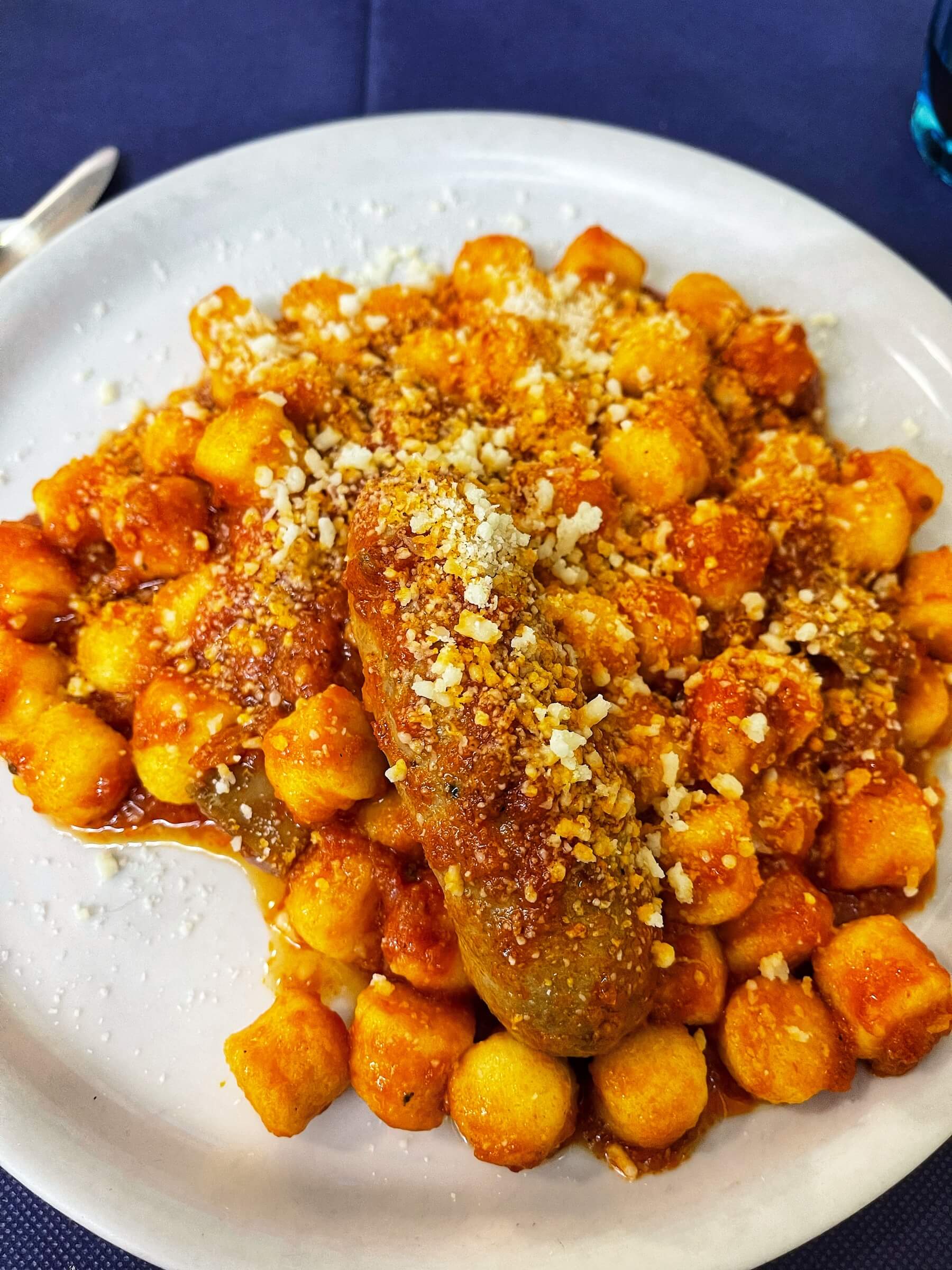
Historically, the menus of Roman restaurants followed a fixed schedule that changed depending on the day of the week: Saturdays meant tripe, for example, whilst fish was reserved for Fridays. The reason was twofold: Catholic religious observances dictated certain alimentary choices, such as an absence of meat on Fridays, whilst at the same time in straitened times it made sense for restaurants to serve the same dishes on the same days as it ensured that food waste was kept to an absolute minimum.
These days the old tradition has long since been eclipsed, with one exception. Thursday means gnocchi, and gnocchi di Giovedì remains sacrosanct: you’d be hard pressed to find a single restaurant in the Eternal City not serving up the classic potato dumplings on Thursdays. Whilst gnocchi pairs well with any number of sughi, the most beloved in the Eternal City is this hearty, slow cooked tomato sauce laden down with pork ribs and sausages. Perfect hearty grub to set you up for the weekend!
Through Eternity Tours offer expert-led visits to the most fascinating sites in Rome. If you’d like to delve into the world of Roman cuisine for yourself, then check out our Roman Street Food Tour!

